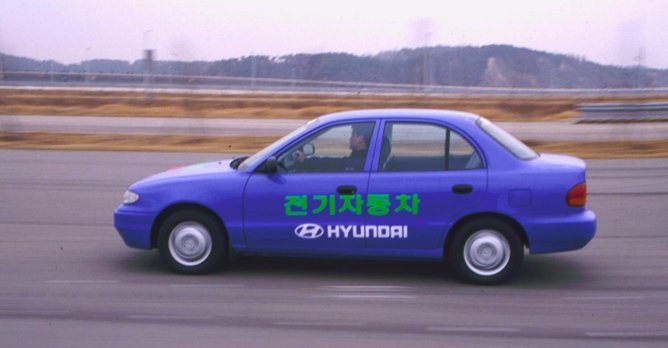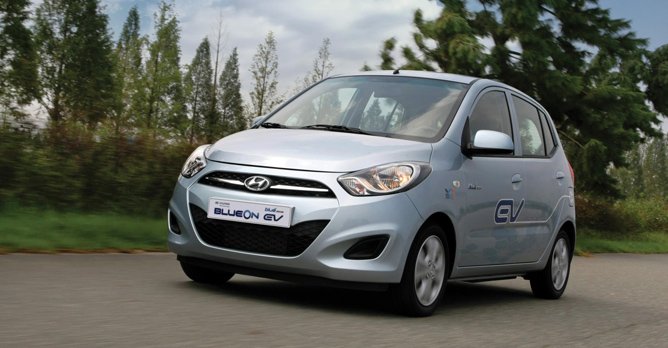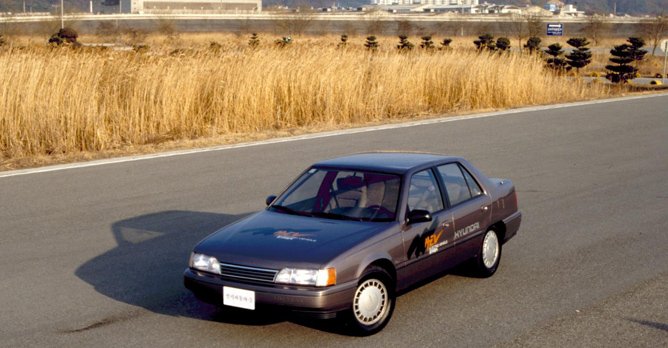Hyundai celebrates 30 years of innovations in eco-mobility
10 Jun 2020|145 views
From hybrids to hydrogen fuel cell, Hyundai has been at the forefront of the development of environmentally-friendly vehicles now for three decades. Providing clean mobility and promoting a sustainable future are key elements related to Hyundai's progressive mindset, which is driving the company forward.
Although electric cars and hybrids have only started to become widely sold in the past decade, Hyundai actually unveiled its first pure electric car as far back as 1991. Since then, several popular eco-friendly models have followed. In 2020, the company is celebrating 30 years of e-mobility.
Hyundai took its first steps in the development of electric vehicles (EV) in the early 1990s. The company unveiled its first pure electric car, the Sonata Electric Vehicle, in 1991. The following years saw Hyundai unveil more lead-acid battery EV concepts.
Hyundai took an even greater stride in the advancement of its EVs with the opening of its Research and Development Center in Namyang, South Korea, in 1995. This lead to the development of Hyundai EVs with nickel-metal hydride batteries, such as the Accent EV concept.
During this period, Hyundai also conducted its first experiments with hybrid propulsion systems. The company's first hybrid-electric car, the FGV-1 concept, debuted at the 1995 Seoul Motor Show. By the turn of the millennium, environmental concerns had entered the mainstream. Hyundai had begun developing fuel cell vehicles in 1998, and introduced its first prototype fuel cell car, the Santa Fe Fuel Cell Electric Vehicle (FCEV) concept, in 2000.

In addition, the Tucson FCEV featured cold weather starting capability, meaning it was still able to be driven after being subjected to temperatures of under 20 degrees Celsius for five days.
Towards the end of the 2000s, car manufacturers began mass-producing hybrid vehicles. Hyundai maintained its innovation leadership in alternative drive systems by launching the Avante LPI Hybrid production model in 2009. It was the world's first hybrid vehicle to be powered by an internal combustion engine built to run on liquefied petroleum gas as a fuel. The LPI Hybrid was the first production car to adopt lithium polymer batteries, which Hyundai developed together with its local partners, have the advantage of lighter weight and higher power.
Following two decades of extensive research and innovative concepts, Hyundai turned its focus towards making electric production models a reality during the 2010s. Hyundai launched BlueOn, its first production electric car, in Seoul in September 2010.
It was based on the Hyundai i10 and is Hyundai's first high-speed EV. Sales were limited to South Korea, and used to serve its government's agencies.
In 2011, sales began for the Hyundai Sonata Hybrid, which had been previously announced at the 2008 Los Angeles Auto Show. As well as being the first conventional full hybrid vehicle to use lithium-ion polymer batteries, the Sonata Hybrid utilised Hyundai's Blue Drive technology. Hyundai celebrated a key milestone in eco-mobility in 2013 as the ix35 Fuel Cell became the first commercially mass-produced hydrogen fuel cell vehicle in the world.
In 2016, Hyundai introduced Ioniq, the world's first car to offer separate hybrid, plug-in hybrid and full electric powertrains in one body type. Hyundai launched the Nexo, its second-generation fuel cell vehicle and technological flagship, in 2018.
Later in 2018, Hyundai announced the world's first subcompact electric SUV, the Kona Electric. Customer demand for the Kona Electric exceeded all expectations following its launch in Europe.
After 30 years of innovations in the development of environmentally-friendly vehicles, Hyundai now offers the most diverse range of EVs on the market. With a new decade underway, Hyundai continues to look towards the future in order to further strengthen its position as a leader of eco-mobility.
2020 is the company's 'Year of Electrification', which means that Hyundai plans to offer over three-quarters of its lineup in Europe as an electrified version by the end of the year, as well as becoming one of the biggest providers of zero emission vehicles in Europe. By 2025, Hyundai plans to be one of the top three providers of electric vehicles in Europe.
From hybrids to hydrogen fuel cell, Hyundai has been at the forefront of the development of environmentally-friendly vehicles now for three decades. Providing clean mobility and promoting a sustainable future are key elements related to Hyundai's progressive mindset, which is driving the company forward.
Although electric cars and hybrids have only started to become widely sold in the past decade, Hyundai actually unveiled its first pure electric car as far back as 1991. Since then, several popular eco-friendly models have followed. In 2020, the company is celebrating 30 years of e-mobility.
Hyundai took its first steps in the development of electric vehicles (EV) in the early 1990s. The company unveiled its first pure electric car, the Sonata Electric Vehicle, in 1991. The following years saw Hyundai unveil more lead-acid battery EV concepts.
Hyundai took an even greater stride in the advancement of its EVs with the opening of its Research and Development Center in Namyang, South Korea, in 1995. This lead to the development of Hyundai EVs with nickel-metal hydride batteries, such as the Accent EV concept.
During this period, Hyundai also conducted its first experiments with hybrid propulsion systems. The company's first hybrid-electric car, the FGV-1 concept, debuted at the 1995 Seoul Motor Show. By the turn of the millennium, environmental concerns had entered the mainstream. Hyundai had begun developing fuel cell vehicles in 1998, and introduced its first prototype fuel cell car, the Santa Fe Fuel Cell Electric Vehicle (FCEV) concept, in 2000.

In addition, the Tucson FCEV featured cold weather starting capability, meaning it was still able to be driven after being subjected to temperatures of under 20 degrees Celsius for five days.
Towards the end of the 2000s, car manufacturers began mass-producing hybrid vehicles. Hyundai maintained its innovation leadership in alternative drive systems by launching the Avante LPI Hybrid production model in 2009. It was the world's first hybrid vehicle to be powered by an internal combustion engine built to run on liquefied petroleum gas as a fuel. The LPI Hybrid was the first production car to adopt lithium polymer batteries, which Hyundai developed together with its local partners, have the advantage of lighter weight and higher power.
Following two decades of extensive research and innovative concepts, Hyundai turned its focus towards making electric production models a reality during the 2010s. Hyundai launched BlueOn, its first production electric car, in Seoul in September 2010.
It was based on the Hyundai i10 and is Hyundai's first high-speed EV. Sales were limited to South Korea, and used to serve its government's agencies.
In 2011, sales began for the Hyundai Sonata Hybrid, which had been previously announced at the 2008 Los Angeles Auto Show. As well as being the first conventional full hybrid vehicle to use lithium-ion polymer batteries, the Sonata Hybrid utilised Hyundai's Blue Drive technology. Hyundai celebrated a key milestone in eco-mobility in 2013 as the ix35 Fuel Cell became the first commercially mass-produced hydrogen fuel cell vehicle in the world.
In 2016, Hyundai introduced Ioniq, the world's first car to offer separate hybrid, plug-in hybrid and full electric powertrains in one body type. Hyundai launched the Nexo, its second-generation fuel cell vehicle and technological flagship, in 2018.
Later in 2018, Hyundai announced the world's first subcompact electric SUV, the Kona Electric. Customer demand for the Kona Electric exceeded all expectations following its launch in Europe.
After 30 years of innovations in the development of environmentally-friendly vehicles, Hyundai now offers the most diverse range of EVs on the market. With a new decade underway, Hyundai continues to look towards the future in order to further strengthen its position as a leader of eco-mobility.
2020 is the company's 'Year of Electrification', which means that Hyundai plans to offer over three-quarters of its lineup in Europe as an electrified version by the end of the year, as well as becoming one of the biggest providers of zero emission vehicles in Europe. By 2025, Hyundai plans to be one of the top three providers of electric vehicles in Europe.
Latest COE Prices
August 2025 | 1st BIDDING
NEXT TENDER: 20 Aug 2025
CAT A$102,009
CAT B$123,498
CAT C$70,001
CAT E$122,334
View Full Results Thank You For Your Subscription.


























